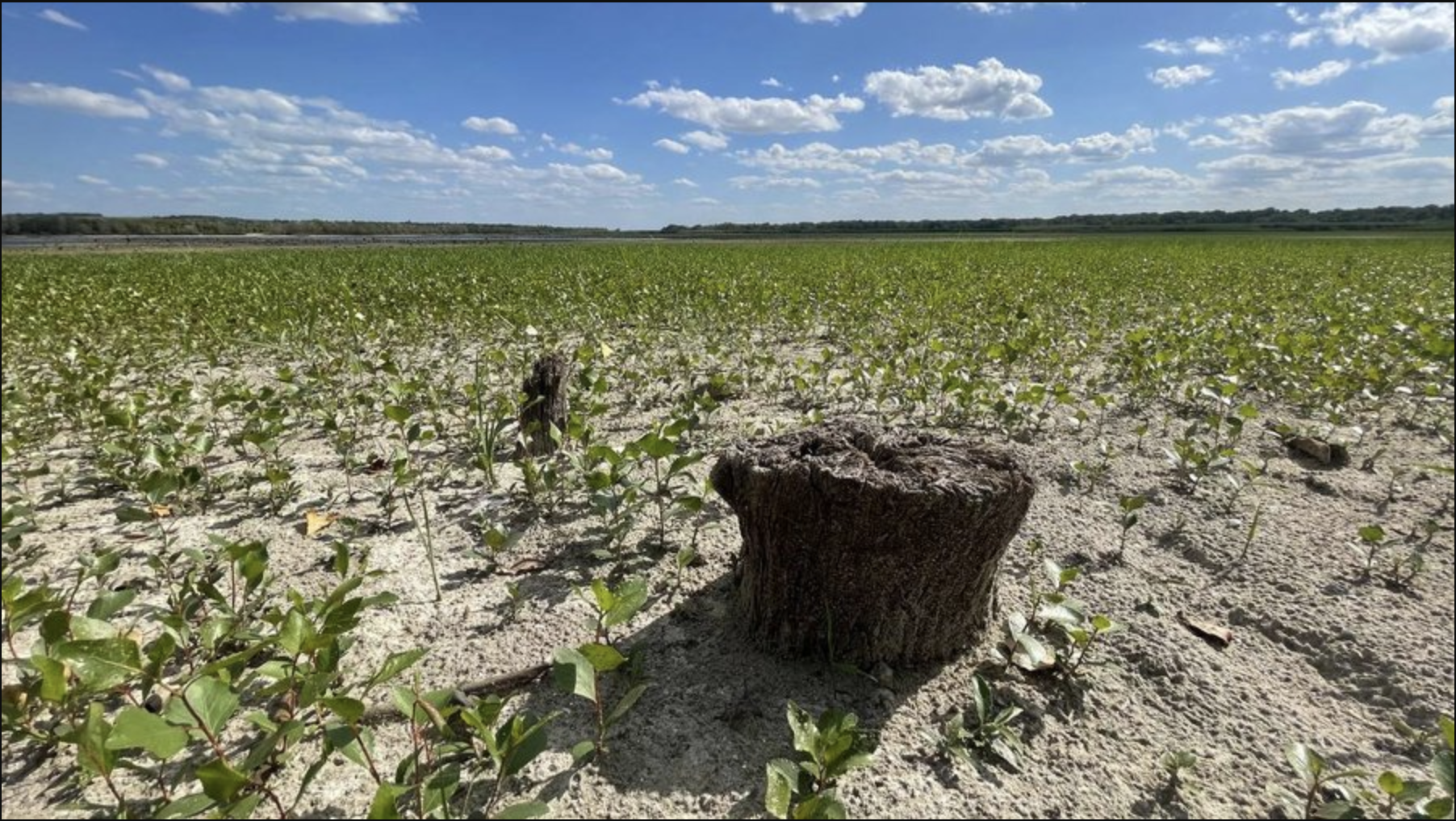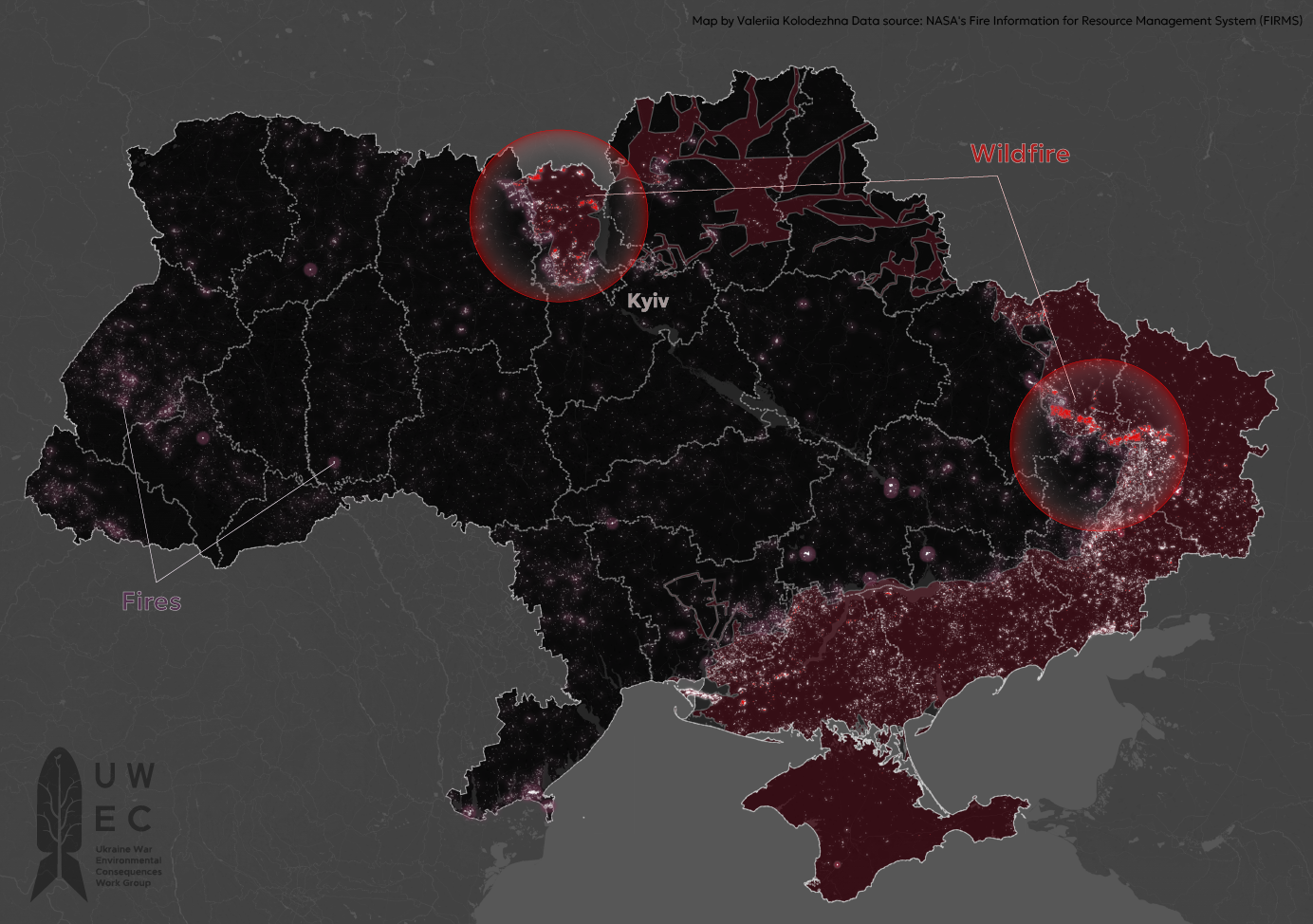Alexej Ovchinnikov
Translated by Alastair Gill
CEOBS and Zoi Environment Network release 7th study on environmental consequences of war in Ukraine
The Conflict and Environment Observatory and Zoi Environment Network’s latest study is devoted to the invasion’s impact on ecosystems and biodiversity, with a particular focus on the consequences for conservation zones.
In particular, the study notes that although Ukraine occupies around 6% of Europe’s territory, the war impacts 35% of its biodiversity. This is largely due to the migration of various species, as well as its unique ecosystems.
At present, conservation zones make up around 6.8% of Ukraine’s total land area. This is significantly lower than the EU standard. However, it should be noted that beginning in 2015 Ukraine lost control over some areas that are important for the conservation of biodiversity, in particular over protected areas in Crimea. UWEC has covered this in previous articles.
- Read more: Nine years after Crimea’s annexation: militarization’s environmental consequences
- Read more: The Crimean Bridge: Environmental impact of Russia’s ‘project of the century’
After the beginning of the full-scale invasion many protected areas were also occupied. In particular, the extensive Askania-Nova Biospher Reserve. Read about the fate of protected areas experiencing occupation and the assistance being provided to them in our articles:
- Read more: Wartime challenges for Ukraine’s protected areas
- Read more: Protected areas and war: two years of humanitarian aid
During the full-scale invasion, reserves and national parks not only found themselves under occupation, but in many cases military action occurred (and continues to occur) on their territory, and consequences extend beyond forest fires.
As part of its analysis, CEOBS used data from Ecodozor, a tool developed with the support of Zoi Environment Network, the UN’s environmental program and the humanitarian initiative REACH.
UWEC Work Group plans to carry out a more detailed analysis of the impact of military action (in particular fires caused by fighting) on Ukraine’s conservation areas and its consequences. Until then, you can familiarize yourself with this study by CEOBS and Zoi Environment Network.
Review of policies for recycling waste generated by military intervention
The organization Environment People Law (EPL) has carried out an analysis of the recycling of waste accumulated as a result of Russia’s invasion of the Chernihiv and Kharkiv regions. This primarily concerns destroyed buildings, infrastructure, and other waste left behind after shelling and as a result of fighting.
Resolution No. 1073, passed by Ukraine’s Cabinet of Ministers on September 27, 2022, establishes a procedure for handling waste created by the damage to or destruction of buildings and structures as a result of military operations, terrorist acts and sabotage, and determines what steps are necessary to clear up the damage. One feature of this procedure is that, whenever possible, sorting and separate collection of waste is carried out onsite.
However, the analysis showed that in the Chernihiv region no measures had been taken to organize places for the temporary storage and sorting of waste. In the majority of the region’s hromady (socio-territorial units) there are no plans for the sorting and use of waste. In five, waste was used by local residents and thus eliminated. In several communities, waste was transported to existing landfills. A similar situation developed in the Kharkiv region.
As the EPL analysis showed, in both regions there is no policy for the temporary storage of waste caused by military activity, and its sorting, although waste disposal solutions may vary.
It is important to note that the recycling of waste formed as a result of the invasion, is an important part of Ukraine’s green recovery and depends directly on this, how the environment copes with the consequences of war.
Meeting on the environmental consequences of the invasion of Ukraine
“United for Nature. Agenda for Ukraine”, an international forum organized by the Ministry of Environmental Protection and Natural Resources of Ukraine, will be held on January 31.
The goal of the forum is to gather diplomats, international organizations, and representatives of business communities to assess the impact of the war on the environment and also analyze the implementation of climate obligations and policy relating to Ukraine’s green transformation.
UWEC Work Group will also be sending a representative to cover the forum: Oleksiy Vasyliuk, the head of the Ukrainian Nature Conservation Group.
Ukrainian environmental organizations have written an open letter on the importance of civil society participation in resolving green recovery issues in Ukraine
Ahead of upcoming discussions of the status of the creation of a fund for Ukraine (Ukraine Facility Regulation), a coalition of civil society organizations has called for their inclusion in the decision-making process, as the Ukrainian environmental organization Ecodiya (Ecoaction) reports.
The open letter drawn up by the organizations insists that when drafting regulations for this fund, the European Commission and the European Parliament should pay close attention to the following issues:
- transparency in decision-making;
- the importance of including civil society representatives in processes related to the Plan for Ukraine and the work of the fund;
- compliance with environmental guarantees and principles.
The 2024-2027 Plan for Ukraine (a new Ukraine Facility) was announced by the European Commission in June 2023. It promises financial support in the form of grants, creation of a special Ukraine Investment Framework, and also technical support to help implement the program.
- Read more about the role of civil society organizations: International banking projects and restoring the Lower Dnipro’s ecosystems
Main image: Bridge over the Tisa River in the Carpathian Biosphere Reserve. Photo: Mykola Tymchenko







